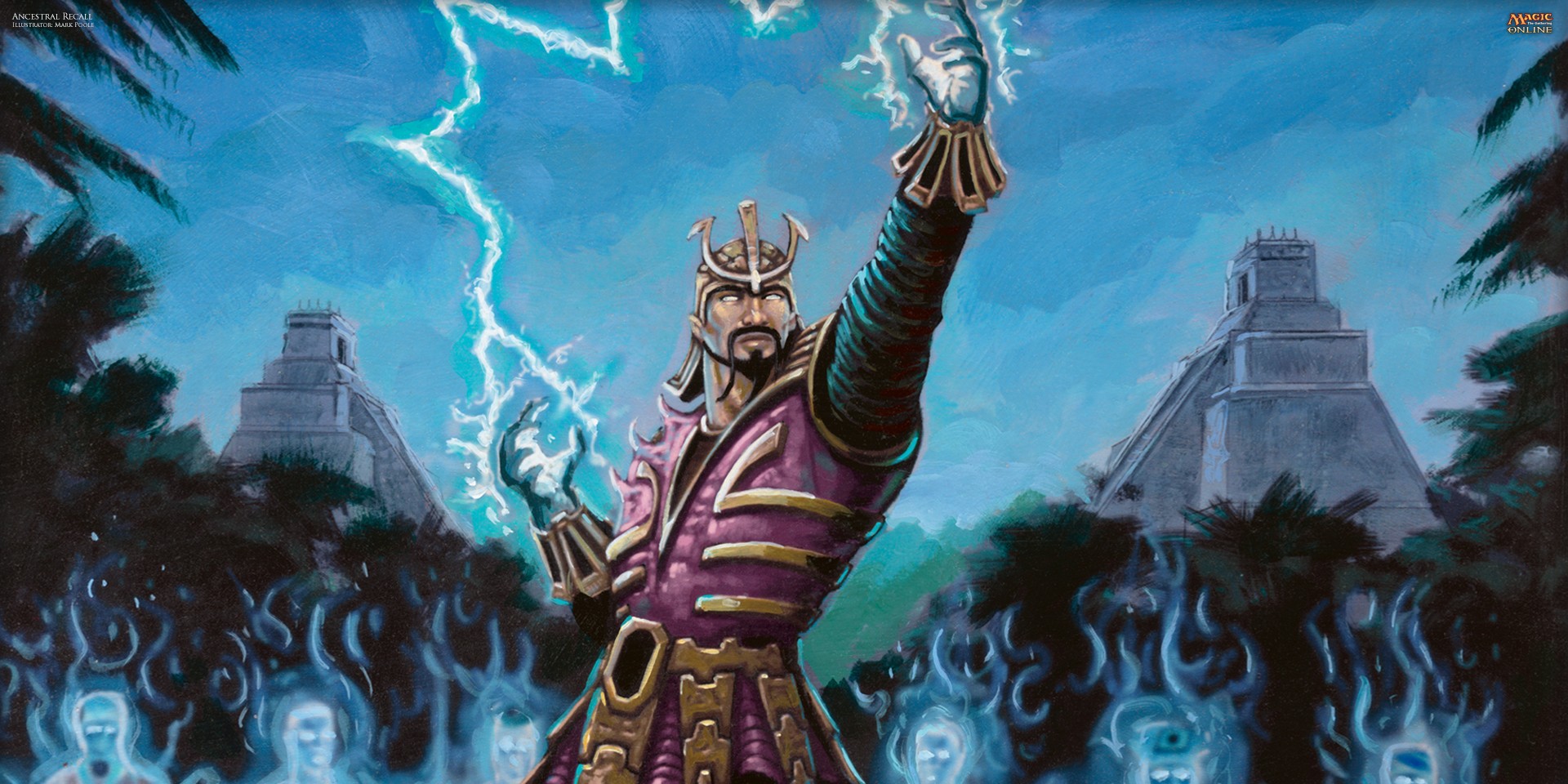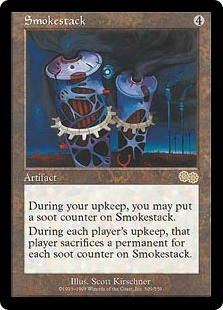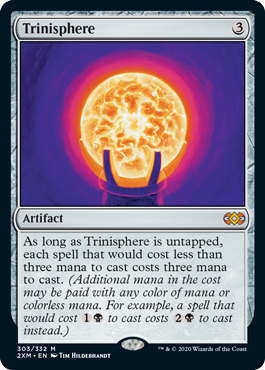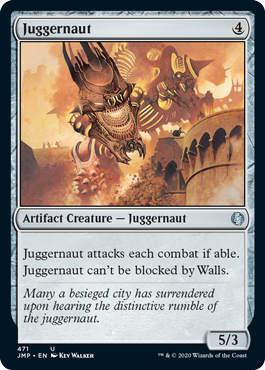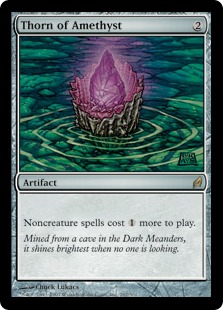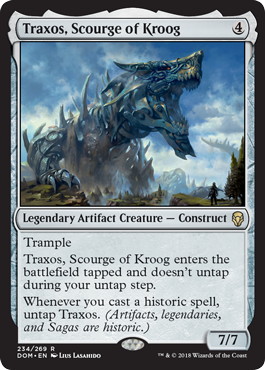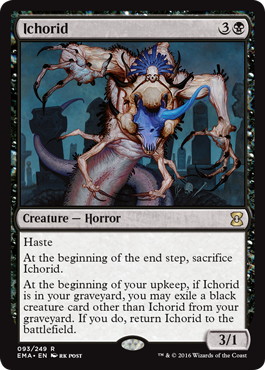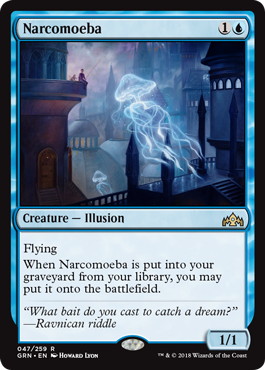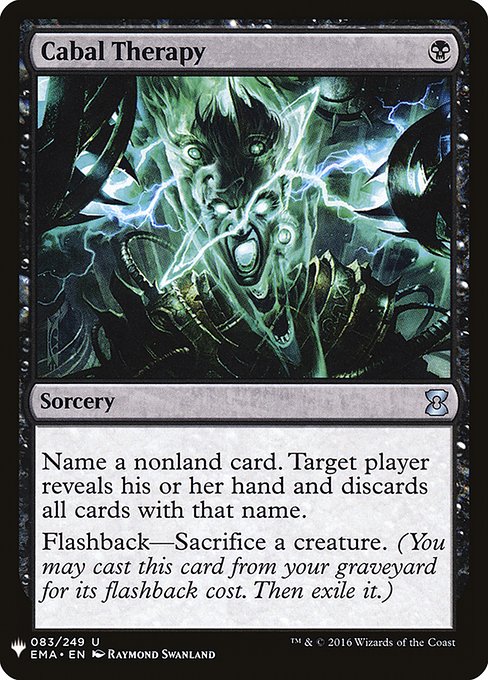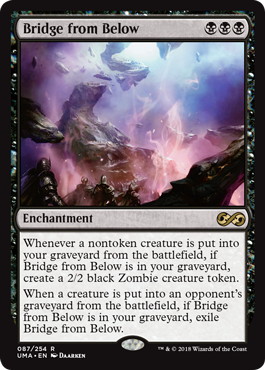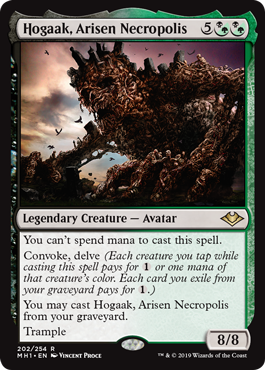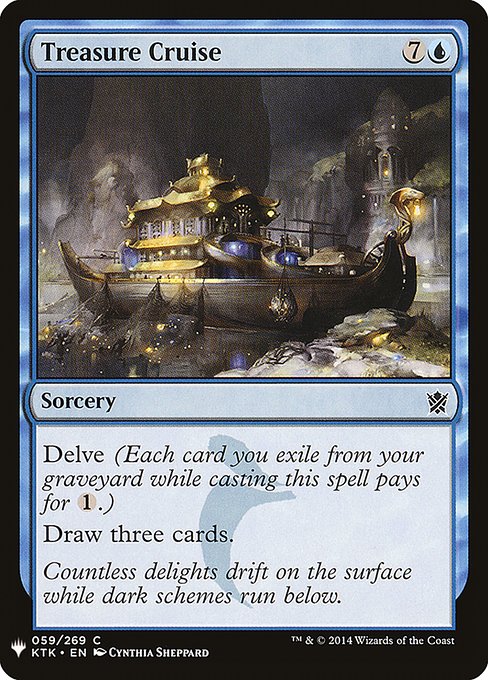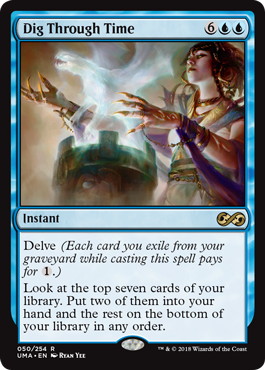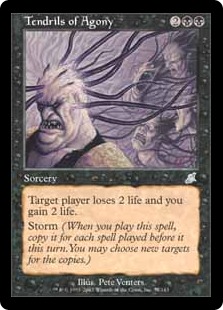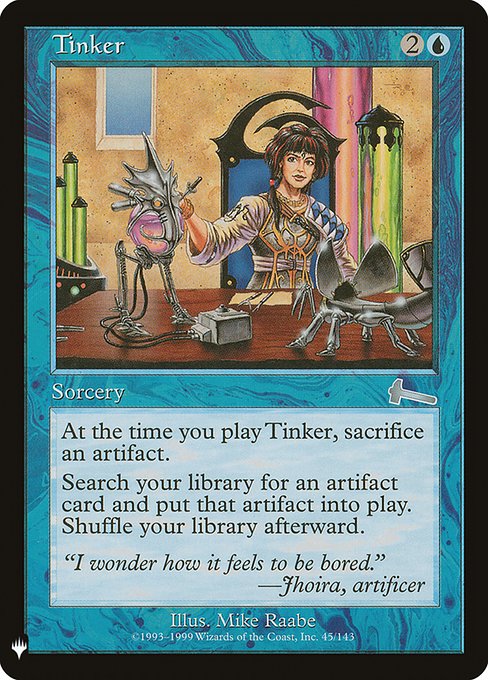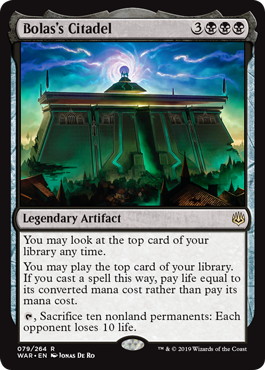Introduction
Hello everyone.
Over the past several weeks, I’ve found myself repeatedly throwing my love for Magic into a format that quite frankly, I had ignored for the better part of my life. That’s right, I’ve been playing Vintage.
Those of you who know me right now may be thinking thoughts such as: “how did that happen”, “that’s so not like him” or “What happened to this guy”, and the simple truth is, I was looking for different ways to have fun with the game of Magic, and frankly Vintage fit the bill.
So why Vintage? What suddenly drew me to this format? Well simply, Vintage is a format where silly things happen “ALL THE TIME”, this goes both in your direction and in the opponents direction, and frankly in the current environment, this was something I needed to reinforce from me gaming. I needed a format of Magic to play, where I could just accept the awesome things that some combinations of cards do, even though the overall balance of them can be debateable.
If you recognize any of these feelings towards the game, or simply find the Vintage format intriguing. This is the place for you, as I will attempt a reasonable list of the various Vintage archetypes, and show where different types of Magic players tend to fit into this wondrous format.
Archetypes
In this section I will break the decks of Vintage mostly into 4 categories. There exists tons of deck variation, within these 4 categories, but overall the 4 categories will give a solid idea of what the decks falling into the category, will try to achieve in a game:
1. 《Mishra’s Workshop》 Decks
《Mishra’s Workshop》 Decks have been a stable of Vintage, for basically forever. In the olden days it primarily made use of cards like 《Smokestack》 《Tangle Wire》, and 《Trinisphere》, to lock your opponent out of the game, finishing it off with the likes of 《Juggernaut》.
That same shell has evolved over the years, and today the 2 most played versions of this archetype are: Ravager Shops and the newer Golos Stax.
- Ravager Shops
- Sample List
- (Vintage)
4 《Ancient Tomb》
4 《Mishra’s Workshop》
4 《Wasteland》
3 《Mishra’s Factory》
1 《Strip Mine》
-Land (17)- 1 《Black Lotus》
1 《Mox Pearl》
1 《Mox Sapphire》
1 《Mox Jet》
1 《Mox Ruby》
1 《Mox Emerald》
-Power 9 (6)- 4 《Stonecoil Serpent》
4 《Walking Ballista》
2 《Hangarback Walker》
4 《Arcbound Ravager》
4 《Phyrexian Revoker》
4 《Foundry Inspector》
1 《Lodestone Golem》
1 《Phyrexian Metamorph》
3 《Traxos, Scourge of Kroog》
-Creature (27)-
1 《Mana Crypt》
1 《Sol Ring》
4 《Sphere of Resistance》
1 《Thorn of Amethyst》
1 《Trinisphere》
1 《Mystic Forge》
-Spell (10)-
4 《Null Rod》
3 《Precursor Golem》
2 《Grafdigger’s Cage》
2 《Sorcerous Spyglass》
-Sideboard (15)-
- Golos Stax
- Sample List
- (Vintage)
1 《Bojuka Bog》
1 《Karakas》
1 《Tolarian Academy》
4 《Mishra’s Workshop》
4 《Wasteland》
3 《Ancient Tomb》
1 《Buried Ruin》
1 《Inventors’ Fair》
1 《Mishra’s Factory》
1 《Strip Mine》
1 《The Tabernacle at Pendrell Vale》
1 《Urborg, Tomb of Yawgmoth》
-Land (23)- 1 《Ancestral Recall》
1 《Black Lotus》
1 《Mox Pearl》
1 《Mox Sapphire》
1 《Mox Jet》
1 《Mox Ruby》
1 《Mox Emerald》
-Power 9 (7)- 3 《Phyrexian Revoker》
3 《Emry, Lurker of the Loch》
1 《Lodestone Golem》
3 《Golos, Tireless Pilgrim》
-Creature (10)-
1 《Chalice of the Void》
1 《Mana Crypt》
1 《Relic of Progenitus》
1 《Sol Ring》
4 《Sphere of Resistance》
2 《Sorcerous Spyglass》
1 《Thorn of Amethyst》
2 《Crucible of Worlds》
1 《Ensnaring Bridge》
1 《Trinisphere》
1 《Mystic Forge》
1 《God-Pharaoh’s Statue》
1 《Karn, Scion of Urza》
1 《Karn, the Great Creator》
-Spell (20)-
3 《Null Rod》
2 《Defense Grid》
2 《Witchbane Orb》
1 《Wurmcoil Engine》
1 《Surgical Extraction》
1 《Sorcerous Spyglass》
1 《Ensnaring Bridge》
1 《Mycosynth Lattice》
-Sideboard (15)-
- White Eldrazi
- Sample List
- (Vintage)
4 《Cavern of Souls》
2 《Karakas》
4 《Ancient Tomb》
4 《Eldrazi Temple》
1 《Strip Mine》
-Land (22)- 1 《Black Lotus》
1 《Mox Pearl》
1 《Mox Sapphire》
1 《Mox Jet》
1 《Mox Ruby》
1 《Mox Emerald》
-Power 9 (6)- 4 《Containment Priest》
4 《Thalia, Guardian of Thraben》
2 《Kataki, War’s Wage》
3 《Eldrazi Displacer》
3 《Glowrider》
4 《Palace Jailer》
4 《Thought-Knot Seer》
4 《Reality Smasher》
-Creature (28)-
4 《Leyline of the Void》
2 《Path to Exile》
2 《Deafening Silence》
2 《Karn, Scion of Urza》
1 《Kataki, War’s Wage》
-Sideboard (15)-
Now first off, one of these decks, doesn’t actualy utilize 《Mishra’s Workshop》, the White Eldrazi deck does not include the powerful land, but employs much the same strategy as the other decks, it simply does it through eldrazi, creatures and white creatures, but for the purpose of simplicity, we’ll bunch it in with the workshop decks.
All 3 of these decks make use of the same type of strategy, playing cards like 《Sphere of Resistance》, 《Trinisphere》, 《Thorn of Amethyst》, and everything else that will make casting spells, more difficult.
The 2 decks have very different ways to end the game, one is basically attempting to completely lock, your opponent out of the game. The other tries to play enough disruption, to finish the game with Beefy creatures like 《Traxos, Scourge of Kroog》, and 《Stonecoil Serpent》. Both decks utilize the incredible persistent mana generation of 《Mishra’s Workshop》 to move above their own disruption.
So who out there might enjoy playing this archetype: This archetype most speak to 2 different types of people, if you enjoy locking your opponent up with an elaborate lock that prevents them from ever playing the game, the Golos deck is definitely for you, if you really like creature combat and disruptions that are just enough to get your opponents off balance, while you kill them. The Ravager Shops are definitely for you.
2. 《Bazaar of Baghdad》 Decks
Much like Workshop decks, Bazaar decks have been a stable of Vintage for a very long time, and 《Bazaar of Baghdad》 Decks, are typically the ones that are the most different from the rest of the decks in Vintage.
Only recently newer versions of 《Bazaar of Baghdad》 Decks have surfaced that actually use the mana system of the game of Magic. Traditionally decks playing 《Bazaar of Baghdad》 has played almost entirely out of their graveyard, utilizing cards like 《Ichorid》, 《Narcomoeba》, 《Cabal Therapy》, and 《Dread Return》. Alongside 《Bridge from Below》, in order to generate either overwhelming board or straight up kills on the second or third turn of the game. If you haven’t already guessed it we are of course here talking about the infamous Dredge deck:
- Dredge
- Sample List
- (Vintage)
-Land (4)- -Power 9 (0)- 4 《Narcomoeba》
3 《Golgari Thug》
4 《Prized Amalgam》
4 《Shambling Shell》
4 《Stinkweed Imp》
4 《Ichorid》
1 《Golgari Grave-Troll》
4 《Hollow One》
-Creature (28)-
1 《Mental Misstep》
2 《Force of Negation》
4 《Creeping Chill》
2 《Mindbreak Trap》
2 《Unmask》
4 《Force of Will》
4 《Bridge from Below》
1 《Chalice of the Void》
4 《Serum Powder》
-Spell (28)-
4 《Leyline of the Void》
3 《Wasteland》
2 《Force of Negation》
1 《Strip Mine》
1 《Mindbreak Trap》
-Sideboard (15)-
While dredge has evolved, over the years. And now includes cards castable from the hand, such as 《Force of Will》/《Force of Negation》, and 《Mindbreak Trap》. The general plan of the deck still remains: Mulligan until your starting hand has a 《Bazaar of Baghdad》, something that became even more consistent with the London Mulligan rule. This deck bypasses 2 of the most commonly considered Resources in Magic: Mana and card quantity. By simply doing everything from the graveyard, I have lost games to the deck where they mulliganned to 1.
This is not the only Vintage deck, to make use of the Bazaar though. Recently there has been another deck using 《Bazaar of Baghdad》 as it’s main engine flourishing in Vintage. I’m talking of course, about the Hogaak Deck:
- Hogaak Vine
- Sample List
- (Vintage)
1 《Savannah》
1 《Dryad Arbor》
2 《Windswept Heath》
1 《Misty Rainforest》
1 《Wooded Foothills》
4 《Wasteland》
1 《Strip Mine》
4 《Bazaar of Baghdad》
-Land (18)- 1 《Black Lotus》
1 《Mox Jet》
1 《Mox Emerald》
-Power 9 (3)- 4 《Basking Rootwalla》
4 《Deathrite Shaman》
4 《Stitcher’s Supplier》
4 《Bloodghast》
4 《Vengevine》
4 《Hollow One》
4 《Hogaak, Arisen Necropolis》
-Creature (28)-
4 《Leyline of the Void》
2 《Collector Ouphe》
2 《Surgical Extraction》
2 《Assassin’s Trophy》
1 《Chalice of the Void》
-Sideboard (15)-
This deck utilizes 《Bazaar of Baghdad》 to power out everyone’s favorite Risen Necropolis, attempting to play a game similar to what dredge does, but having more game against hate, against being a little slower.
If you were a fan of Hogaak summer in Modern, or have always enjoyed playing dredge in various formats, I guarantee you, these superpowerede versions of the decks will be the place for you.
3. 《Ancestral Recall》 Decks
Ok, so every deck that can produce blue mana in the history of Magic, would love to put 《Ancestral Recall》 in their decks, but let me specify more, this category is specifically for decks that use 《Ancestral Recall》 or similar cards like 《Treasure Cruise》 and 《Dig Through Time》 in combination with 《Force of Will》, as a part of their overall game plan.
And frankly they exist in a million shapes and sizes, many of these decks will have some type of combo finish, whether it be 《Monastery Mentor》 + 《Time Walk》, 《Doomsday》 of some sort, or 《Thassa’s Oracle》 《Demonic Consultation》. But versions utilizing 《Delver of Secrets》 and 《Young Pyromancer》, 《Deathrite Shaman》 and 《Tarmogoyf》, or 《Dack Fayden》 and 《Narset, Parter of Veils》, also still exist and are capable of performing within the format.
Here are some sample decklists of various decks built around these very powerful blue cards:
- Blue Xerox
- Sample List
- (Vintage)
2 《Tropical Island》
2 《Volcanic Island》
2 《Flooded Strand》
2 《Misty Rainforest》
2 《Polluted Delta》
3 《Wasteland》
1 《Strip Mine》
-Land (15)- 1 《Ancestral Recall》
1 《Time Walk》
1 《Black Lotus》
1 《Mox Sapphire》
1 《Mox Ruby》
1 《Mox Emerald》
-Power 9 (6)- 2 《Dreadhorde Arcanist》
2 《Sprite Dragon》
-Creature (4)-
3 《Pyroblast》
2 《Flusterstorm》
2 《Lightning Bolt》
2 《Spell Pierce》
1 《Brainstorm》
1 《Gitaxian Probe》
1 《Mental Misstep》
1 《Ponder》
1 《Repeal》
1 《Stifle》
2 《Daze》
1 《Ancient Grudge》
1 《Brain Freeze》
1 《Return to Nature》
4 《Force of Will》
1 《Gush》
1 《Underworld Breach》
2 《Wrenn and Six》
1 《Dack Fayden》
1 《Narset, Parter of Veils》
1 《Oko, Thief of Crowns》
-Spell (35)-
- Paradoxical Outcome
- Sample List
- (Vintage)
2 《Tundra》
2 《Underground Sea》
2 《Volcanic Island》
2 《Flooded Strand》
2 《Polluted Delta》
2 《Scalding Tarn》
1 《Tolarian Academy》
-Land (14)- 1 《Ancestral Recall》
1 《Time Walk》
1 《Black Lotus》
1 《Mox Pearl》
1 《Mox Sapphire》
1 《Mox Jet》
1 《Mox Ruby》
1 《Mox Emerald》
-Power 9 (8)- 1 《Lavinia, Azorius Renegade》
1 《Snapcaster Mage》
1 《Monastery Mentor》
-Creature (3)-
2 《Pyroblast》
1 《Brainstorm》
1 《Flusterstorm》
1 《Gitaxian Probe》
1 《Mental Misstep》
1 《Ponder》
1 《Vampiric Tutor》
1 《Demonic Tutor》
1 《Hurkyl’s Recall》
1 《Merchant Scroll》
1 《Tinker》
1 《Yawgmoth’s Will》
4 《Paradoxical Outcome》
4 《Force of Will》
1 《Dig Through Time》
3 《Mox Opal》
1 《Mana Crypt》
2 《Sensei’s Divining Top》
1 《Mana Vault》
1 《Sol Ring》
1 《Bolas’s Citadel》
1 《Narset, Parter of Veils》
1 《Teferi, Time Raveler》
-Spell (35)-
3 《Hurkyl’s Recall》
3 《Soul-Guide Lantern》
2 《Flusterstorm》
2 《Lightning Bolt》
1 《Blightsteel Colossus》
1 《Pyroblast》
-Sideboard (15)-
- Doomsday
- Sample List
- (Vintage)
4 《Underground Sea》
3 《Misty Rainforest》
2 《Flooded Strand》
2 《Polluted Delta》
2 《Scalding Tarn》
-Land (14)- 1 《Ancestral Recall》
1 《Time Walk》
1 《Black Lotus》
1 《Mox Sapphire》
1 《Mox Jet》
-Power 9 (5)- 2 《Thassa’s Oracle》
3 《Street Wraith》
-Creature (5)-
4 《Preordain》
2 《Cling to Dust》
2 《Flusterstorm》
1 《Brainstorm》
1 《Chain of Vapor》
1 《Demonic Consultation》
1 《Gitaxian Probe》
1 《Mental Misstep》
1 《Mystical Tutor》
1 《Ponder》
1 《Vampiric Tutor》
2 《Daze》
1 《Demonic Tutor》
4 《Doomsday》
1 《Force of Negation》
1 《Mystical Dispute》
4 《Force of Will》
1 《Gush》
1 《Dig Through Time》
1 《Necropotence》
-Spell (36)-
- Sultai Midrange
- Sample List
- (Vintage)
3 《Tropical Island》
3 《Underground Sea》
3 《Misty Rainforest》
3 《Verdant Catacombs》
4 《Wasteland》
1 《Strip Mine》
-Land (18)- 1 《Ancestral Recall》
1 《Time Walk》
1 《Black Lotus》
1 《Mox Sapphire》
1 《Mox Jet》
1 《Mox Emerald》
-Power 9 (6)- 4 《Deathrite Shaman》
3 《Tarmogoyf》
2 《Collector Ouphe》
1 《Snapcaster Mage》
2 《Leovold, Emissary of Trest》
1 《Brazen Borrower》
-Creature (13)-
1 《Fatal Push》
1 《Flusterstorm》
1 《Mental Misstep》
1 《Ponder》
1 《Spell Pierce》
3 《Assassin’s Trophy》
1 《Demonic Tutor》
4 《Force of Will》
1 《Gush》
1 《Misdirection》
1 《Dig Through Time》
1 《Treasure Cruise》
1 《Sylvan Library》
3 《Oko, Thief of Crowns》
1 《Narset, Parter of Veils》
-Spell (23)-
2 《The Tabernacle at Pendrell Vale》
2 《Trickbind》
2 《Force of Vigor》
2 《Ravenous Trap》
2 《Energy Flux》
1 《Veil of Summer》
-Sideboard (15)-
- Oath of Druids
- Sample List
- (Vintage)
2 《Tropical Island》
2 《Volcanic Island》
1 《Tundra》
3 《Flooded Strand》
2 《Misty Rainforest》
2 《Polluted Delta》
1 《Library of Alexandria》
1 《Strip Mine》
1 《Wasteland》
-Land (16)- 1 《Ancestral Recall》
1 《Time Walk》
1 《Black Lotus》
1 《Mox Pearl》
1 《Mox Sapphire》
1 《Mox Ruby》
1 《Mox Emerald》
-Power 9 (7)- 1 《Inferno Titan》
1 《Sun Titan》
-Creature (2)-
2 《Pyroblast》
1 《Brainstorm》
1 《Flusterstorm》
1 《Gitaxian Probe》
1 《Mental Misstep》
1 《Peek》
1 《Ancient Grudge》
1 《Balance》
1 《Merchant Scroll》
1 《Fire/Ice》
1 《Mindbreak Trap》
4 《Force of Will》
1 《Gush》
1 《Dig Through Time》
1 《Treasure Cruise》
2 《Oath of Druids》
2 《Sylvan Library》
1 《Underworld Breach》
1 《Lotus Petal》
1 《Soul-Guide Lantern》
2 《Wrenn and Six》
2 《Dack Fayden》
1 《Narset, Parter of Veils》
1 《Oko, Thief of Crowns》
1 《Jace, the Mind Sculptor》
-Spell (35)-
2 《Nature’s Claim》
2 《Ravenous Trap》
2 《Deafening Silence》
2 《Relic of Progenitus》
1 《Karakas》
1 《The Tabernacle at Pendrell Vale》
1 《Flusterstorm》
1 《Ancient Grudge》
1 《Tormod’s Crypt》
-Sideboard (15)-
All of these decks have in common that their primary objective is to use 《Ancestral Recall》, 《Force of Will》, and a combination of other card draw/counterspells, to lock in their combo finish or produce enough pressure, that their counterspells will protect them against our next category of decks.
This catergory is perhaps the widest as it appeals to many different types of players, fans of traditional midrange will find themselves drawn here. As well fans of traditional control, and even fans of tempo and combo/control decks, will find themselves drawn to these decks. Seeing as these decks are for the most part hyper powered versions, of what we are used to playing with in more recent formats.
4. Combo decks
So we just went through a list of decks, that would eventually kill people in some sort of combo or combo like manner, so what exactly is the reason for a second combo category? Well these are the decks dedicated to their combo, beyond playing cards like 《Force of Will》 for defence. These decks are hellbent on execurting their combo, whether it revolve around 《Tendrils of Agony》, 《Goblin Charbelcher》, or whatever it may be that leads to the fiery finish of the game.
Recently only one pure combo deck has really proven itself to have much success in the format, which would seem natural, given that most of the cards people play in Vintage are specifically played to be good against you. These decks often utilize 《Ancestral Recall》 and blue cantrips, in order to find their combo pieces, attempting usualy to finish the game within the first 2-3 turns of the game.
In these decks, you will also almost always find 《Tinker》, a card that if you browse through some of the lists up top does see some play and has received a recent power boost due to the addition of 《Bolas’s Citadel》. 《Tinker》 enables a potentially simpler backup plan often coming out of the sideboard. The most currently popular deck seems to be the Blue-Black based storm deck:
- Storm
- Sample List
- (Vintage)
3 《Underground Sea》
1 《Badlands》
4 《Polluted Delta》
2 《Bloodstained Mire》
1 《Tolarian Academy》
-Land (12)- 1 《Ancestral Recall》
1 《Time Walk》
1 《Timetwister》
1 《Black Lotus》
1 《Mox Pearl》
1 《Mox Sapphire》
1 《Mox Jet》
1 《Mox Ruby》
1 《Mox Emerald》
-Power 9 (9)- -Creature (0)-
4 《Duress》
3 《Preordain》
1 《Brainstorm》
1 《Chain of Vapor》
1 《Gitaxian Probe》
1 《Mystical Tutor》
1 《Ponder》
1 《Repeal》
1 《Vampiric Tutor》
2 《Cabal Ritual》
1 《Demonic Tutor》
1 《Tinker》
1 《Wheel of Fortune》
1 《Windfall》
1 《Yawgmoth’s Will》
1 《Tendrils of Agony》
2 《Dark Petition》
1 《Necropotence》
1 《Chrome Mox》
1 《Lion’s Eye Diamond》
1 《Lotus Petal》
1 《Mana Crypt》
1 《Mana Vault》
1 《Sol Ring》
2 《Defense Grid》
1 《Wishclaw Talisman》
1 《Bolas’s Citadel》
-Spell (39)-
3 《Leyline of the Void》
2 《Pyroblast》
2 《Bontu’s Last Reckoning》
2 《Tormod’s Crypt》
1 《Island》
1 《Blightsteel Colossus》
1 《Chain of Vapor》
-Sideboard (15)-
These types of decks typically attract those among us who likes puzzles in our game, to find the intricate way that we can force our combo through the disruption the opponent presents us with.
Conclusion
Now that all of this is said, Vintage is a MASSIVE format. There is still so much room for innovation, and the release of almost every new set brings with it, a new potential Vintage combo, simply due to the vastness of the cardpool.
I hope this has given you an idea of what possibilities there are in Vintage and which one might be the best fit for you and the way you like to play Magic.
Thanks for reading:
Kasper (Twitter)


